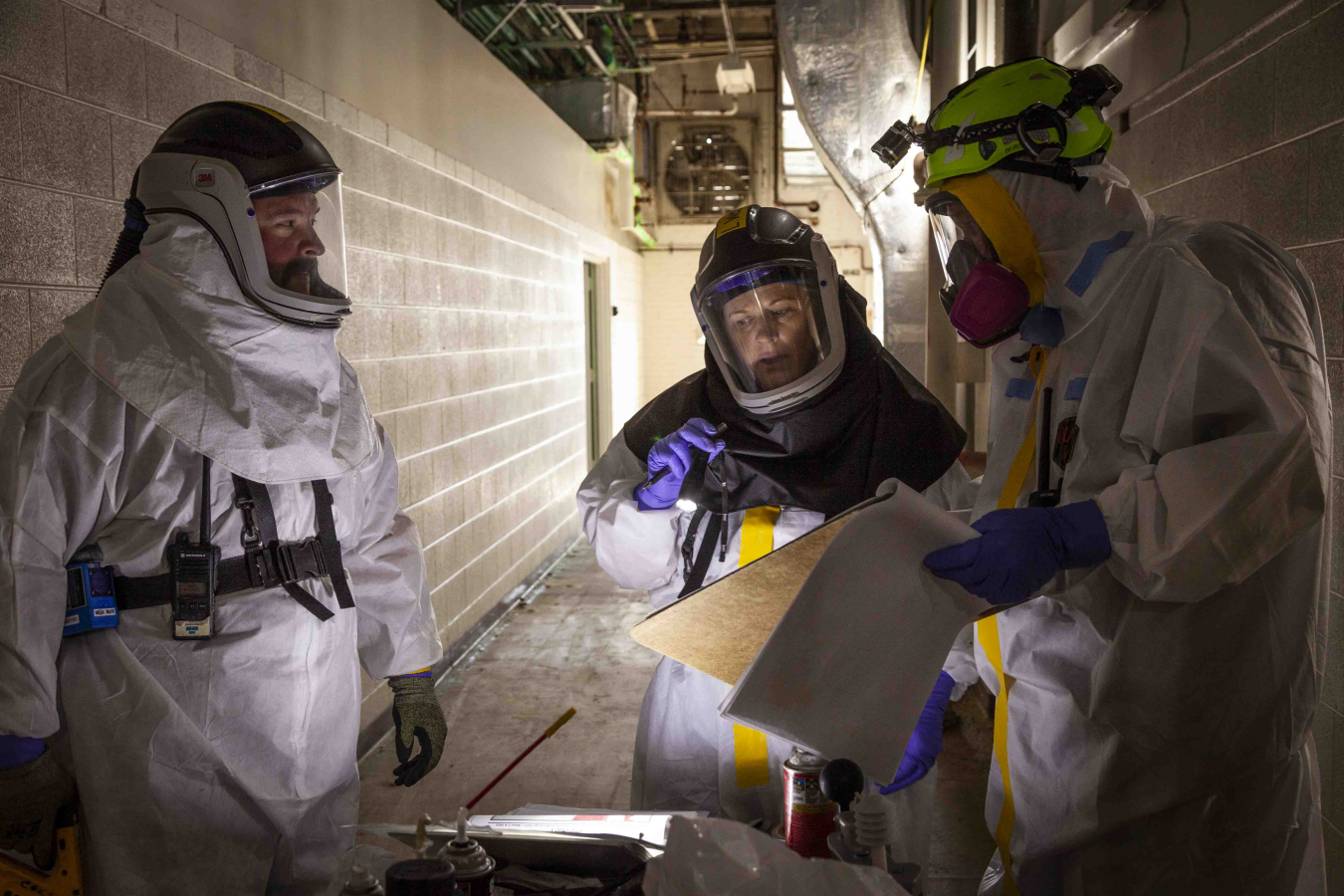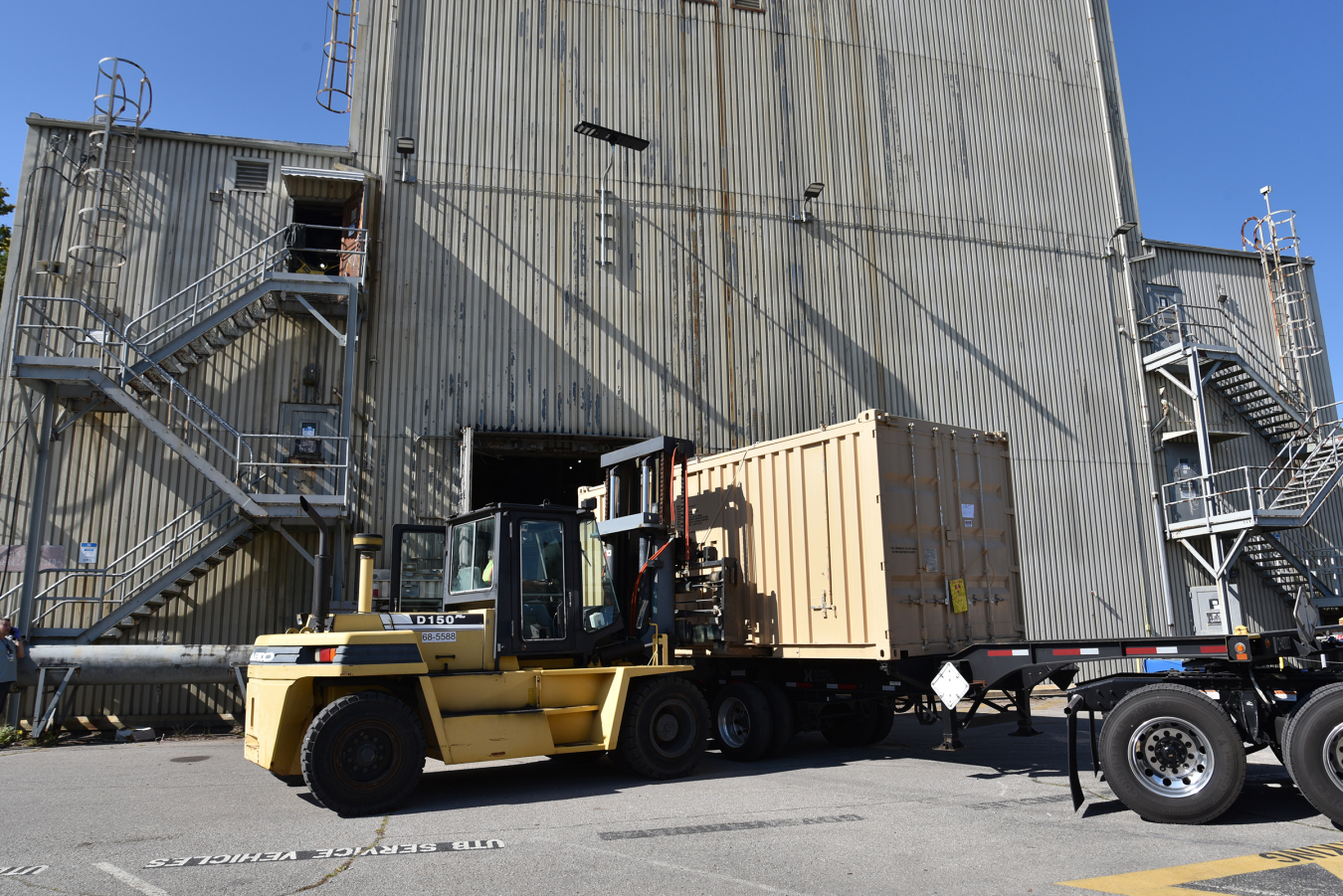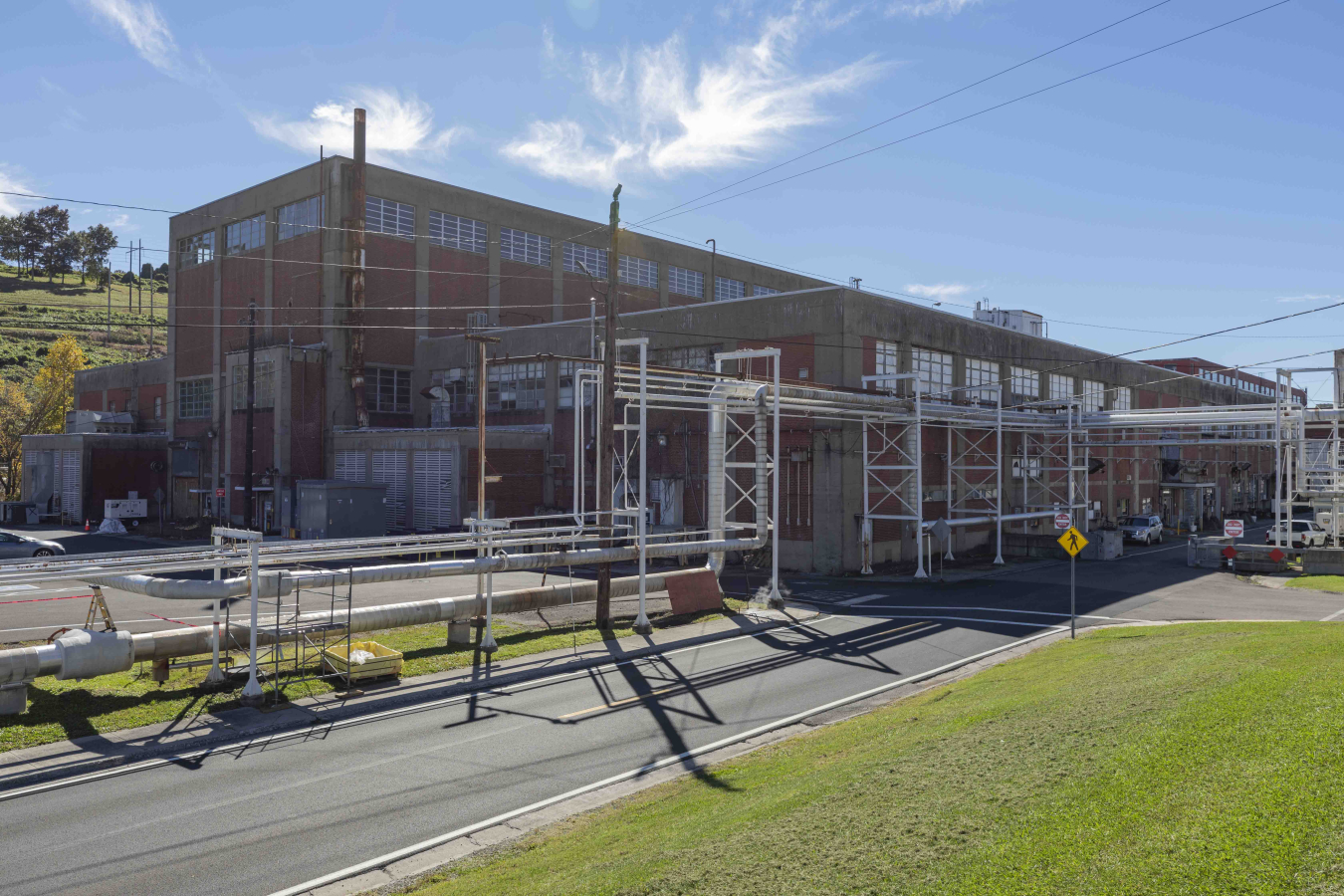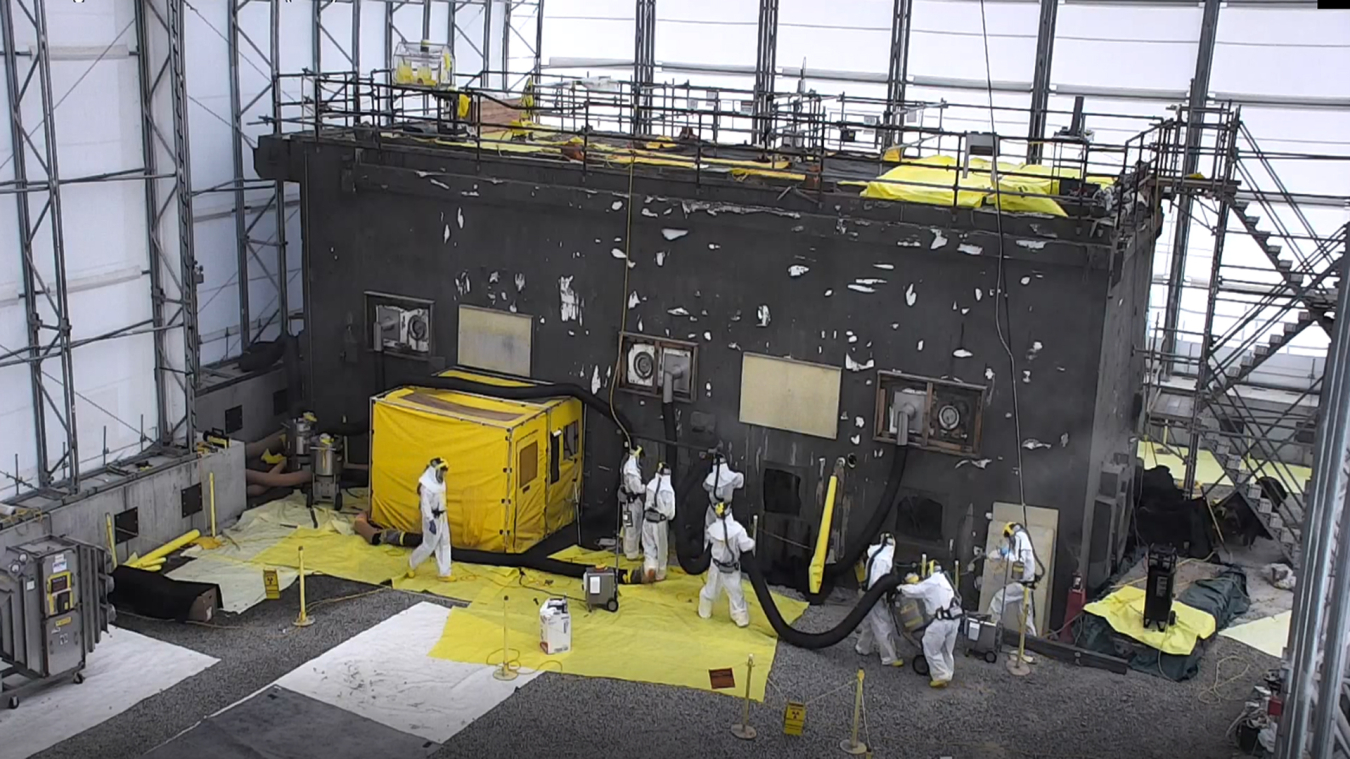Efforts lead way to enabling modernization, providing land for research, national security missions
Office of Environmental Management
March 4, 2025The deactivation phase prepares structures for safe demolition. A team inside the Beta-1 facility at the Y-12 National Security Complex conducting deactivation work discusses utility isolations.
Efforts lead way to enabling modernization, providing land for research, national security missions
OAK RIDGE, Tenn. — While U.S. Department of Energy Office of Environmental Management crews are busy with their largest demolition yet at the Y-12 National Security Complex (Y-12), other team members are forging the way for the next batch of major teardowns in Oak Ridge.
The Oak Ridge Office of Environmental Management (OREM) and cleanup contractor UCOR are deactivating more than 400,000 square feet of Manhattan Project and Cold War-era facilities — equaling nearly 10 acres — at Y-12 and Oak Ridge National Laboratory (ORNL).
The deactivation phase readies structures for demolition. It involves environmental sampling, utility disconnections, asbestos and hazardous waste removal, and other tasks to ensure the buildings are safe to demolish.
“Most of the time deactivation isn’t visible to outside observers, and it doesn’t capture headlines,” OREM Operations Management Division Director Larry Perkins said. “However, it plays a critical role in accomplishing our mission. You can’t safely remove old, contaminated buildings or transform the landscape without it.”
Workers remove waste from the Oak Ridge Research Reactor at Oak Ridge National Laboratory. They are preparing the facility for near-term demolition, which will transform the laboratory’s central campus area.
Crews are deactivating approximately 300,000 square feet of facilities at the Y-12 National Security Complex. Beta-1, a former Manhattan Project-era uranium enrichment facility, takes up most of that total.
At ORNL, former research reactors and isotope production labs totaling 102,000 square feet are in various stages of deactivation. Around 300,000 square feet of facilities are being deactivated at Y-12, including Beta-1, a Manhattan Project-era uranium enrichment facility.
“This is complex work as the teams review old building drawings that might date back to the 1940s, and we remove hazardous materials and equipment that were left behind,” says UCOR Chief Operating Officer Pat Timbes. “Every step of the deactivation process must be planned carefully as workers could encounter unexpected conditions that must be resolved before moving forward.”
UCOR General Foreman Juli Foster and her team have been working on deactivation related work for more than a year at ORNL’s Building 3517, the former Fission Project Development Laboratory. Teams are drilling access points into the building’s contaminated hot cells for remote camera inspection.
“This work involved months of mock-ups, practice drilling and coordination with radiological control personnel and carpenters,” says Foster. “When we encountered challenges with an overhead crane, our team figured out a solution to keep safely working, and we’re nearing completion.”
Crews are mobilizing equipment to enter the last remaining hot cell of the Radioisotope Development Laboratory at Oak Ridge National Laboratory.
Greg Buckner, UCOR’s Y-12 deactivation and demolition characterization field lead, has worked 20 years with safety, industrial hygiene and radiological control teams on complex deactivation work. His more recent projects involve Alpha-2, now being demolished, and ongoing deactivation work at Beta-1 and Alpha-4.
“Our team ensures those facilities are safe for workers during deactivation activities like piping and waste removal, so it’s rewarding for our crews to see a large building like Alpha-2 coming down, and the role we played in clearing that area at Y-12,” said Buckner.
The work happening now is removing risks and laying the groundwork for numerous demolitions on the horizon at Y-12 and ORNL.
The deactivation underway will enable the near-term removal of the Radioisotope Development Laboratory, Oak Ridge Research Reactor, Graphite Reactor support facilities, and Isotope Row facilities in the heart of ORNL to clear space for research missions, and the removal of Beta-1 at Y-12 to enable modernization.
-Contributor: Carol Hendrycks
To receive the latest news and updates about the Office of Environmental Management, submit your e-mail address.





